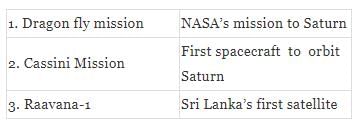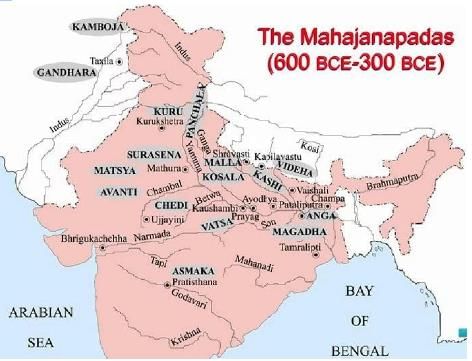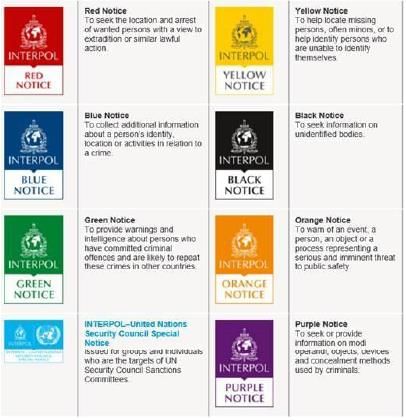UPSC Paper 1 Mock Test - 22 - UPSC MCQ
30 Questions MCQ Test Additional Study Material for UPSC - UPSC Paper 1 Mock Test - 22
Which of the following sets of pair(s) is/are correctly matched?

Select the correct answer using the code given below:

Select the correct answer using the code given below:
With reference to the Judges of the Supreme Court, consider the following statements:
(1) At present, the maximum strength of Judges in the Supreme Court is 31.
(2) The President can increase the strength of Judges in the Supreme Court.
(3) A constitutional amendment is required to increase the strength of Judges.
Which of the statements given above is/are correct?
(1) At present, the maximum strength of Judges in the Supreme Court is 31.
(2) The President can increase the strength of Judges in the Supreme Court.
(3) A constitutional amendment is required to increase the strength of Judges.
Which of the statements given above is/are correct?
| 1 Crore+ students have signed up on EduRev. Have you? Download the App |
Consider the following statements with respect to the Petroleum and Explosives Safety Organisation (PESO):
1. It is a statutory authority under the administrative control of Ministry of Petroleum and Natural Gas.
2. It grants license to fireworks manufacturing factories and conducts a periodic inspection.
3. Enforcement of Petroleum Act, 1934 is entrusted to PESO.
Which of the statements given above is/are correct?
1. It is a statutory authority under the administrative control of Ministry of Petroleum and Natural Gas.
2. It grants license to fireworks manufacturing factories and conducts a periodic inspection.
3. Enforcement of Petroleum Act, 1934 is entrusted to PESO.
Which of the statements given above is/are correct?
Recently, the Reserve Bank of India has set up an Expert Committee to review the current framework for the Micro, Small and Medium Enterprises. Who is the chairman of the committee?
Consider the following statements regarding Indo-Iranian relation during 6th Century BC onwards:
1. Iranian scribes brought into India Kharosthi language.
2. Punch-marked coins were introduced for the first time by Iranian rulers in North West India.
Which of the statements given above is/are correct?
Special 301 Report which is sometimes in the news refers to:
With reference to the Indian National Army (INA) trials, consider the following statements:
1. The agitation in support of the INA prisoners was limited only to the major cities of Delhi, Bombay and Calcutta.
2. There were several incidences of communal violence during the agitation against INA trials.
Which of the statements given above is/are correct?
Consider the following pairs:

Which of the above-given pairs is/are correctly matched?
Which of the following are the features of Nagara style of Temple Architecture:
1. Elaborate walls and gateways.
2. Presence of river goddess.
3. Absence of a water tank or reservoirs.
Select the correct answer using the code given below:
Consider the following statement regarding women's participation in the Indian National Movement during Gandhian Phase:
1. It was the Non- Cooperation Movement in which Gandhiji invited women for the first time in any mass campaign.
2. Gandhiji included selected women in his original core group of volunteers in the Dandi march.
Which of the statements given above is/are correct?
The Government of India has adopted the strategy of “Detect – Treat – Prevent – Build” (DTPB) for the elimination of:
Which of the following is the objective of the initiative “STRIDE”?
About Pandit Ishwarchand Vidyasagar, consider the following statements:
(1) The focus of his reform was women empowerment.
(2) He co-founded Brahmo Samaj with Raja Rammohan Roy.
(3) He reconstructed the Bengali alphabets.
Which of the statements given above is/are correct?
Which of the following statements is not correct about Dr B. R. Ambedkar?
ISRO plans to send humans to space as part of Gaganyaan Mission by 2022. In this regard, consider the following statements:
1. India will become the 3rd country after Russia and USA to launch human spaceflight mission.
2. ISRO has signed a Memorandum of Understanding (MoU) with NASA for a short visit to International Space Station as a training mission.
Which of the above statements is/are correct?
Consider the following statements regarding Gupta age:
1. During the Gupta period, castes proliferated into numerous sub-castes.
2. One of the reasons for the increase in the number of castes was the absorption of many tribal people into the Brahmanical society through the process of land grants.
Which of the statements given above is/are correct?
With reference to Bharat Stage (BS) fuel norms, consider the following statements:
(1) BS-VI fuel will bring down sulphur content by 5 times from the current BS-IV levels.
(2) The harmful NOx (Nitrogen Oxides) emissions from diesel cars can be brought down by nearly 70% with BS-VI.
(3) BS-VI fuel norms will bring down the PM 2.5 and PM 10 in diesel cars.
Which of the statements given above are correct?
Consider the following statements with regard to the strategies adopted as part of Non-Cooperation Movement:
1. A full scale civil disobedience campaign was to be launched if Government resorted to repression.
2. Non-Cooperation Programme was to be implemented in stages as directed by the All India Congress Committee.
Which of the statements given above is/are correct?
Which of the following is/are correct regarding One Nation, One Ration Card Scheme?
1. Ration card - Aadhar linkage is not mandatory to access the scheme.
2. It aims to remove fake ration cardholders.
3. It will control the rising food subsidy bill.
4. It will allow the poor migrant workers to buy subsidized rice and wheat from any ration shop in the country.
Select the correct answer using the code given below:
“He was an important poet in the early phase of the Gupta period and wrote thirteen plays. He wrote in Sanskrit, but his dramas also contain a substantial amount of Prakrit. He was the author of a drama called Daridra Charudatta, which was later refashioned as Mrichchhakatika or the Little Clay Cart”.He was:
As per the Supreme Court's directions, Green Crackers were developed by CSIRNEERI. In this context, consider the following statements:
1. Unlike the traditional crackers, green crackers contain salts of Barium and Strontium.
2. Green crackers not only produce less smoke but also produce less sound.
3. These crackers release water vapour upon bursting to help settle the dust particles.
Which of the statements given above is/are correct?
“By the end of the seventh century, Pataliputra declined and Kanauj became new political centre”. Which of the following can be a reason for this?
Which of the following statements about “Participatory Guarantee” is not correct?
With reference to the War Conference of 1917, consider the following statements:
1. It was convened in Delhi under Lord Chelmsford.
2. The motive was to garner Indian support for the British efforts during the first World War.
3. Gandhiji did not participate in it.
Which of the statements given above are correct?
Consider the following statements regarding Zero Budget Natural Farming:
1. It is a method of chemical-free agriculture based on traditional Indian practices.
2. It encourages intensive irrigation and deep ploughing of the fields.
Which of the above statement is/are correct?
Consider the following statements regarding Chandragupta II:
1. He adopted the title of Vikramaditya.
2. His court at Ujjain was adorned by scholars like Kalidasa and Amarasimha.
3. Chinese pilgrim Fa-hsien visited India during his reign.
Which of the statements given above is/are correct?
Consider the following statements about Godavari-Penna River Linkage Project:
(1) The Project is expected to solve drinking water and irrigation issue of north coastal Andhra
(2) Penna river rises in Nandi Hills in Karnataka.
(3) River Godavari flows in the States of Maharashtra, Telangana, Andhra Pradesh, Chhattisgarh and Odisha before emptying into the Bay of Bengal.
Which of the statements given above is/are correct?
|
20 videos|561 docs|160 tests
|
|
20 videos|561 docs|160 tests
|



















